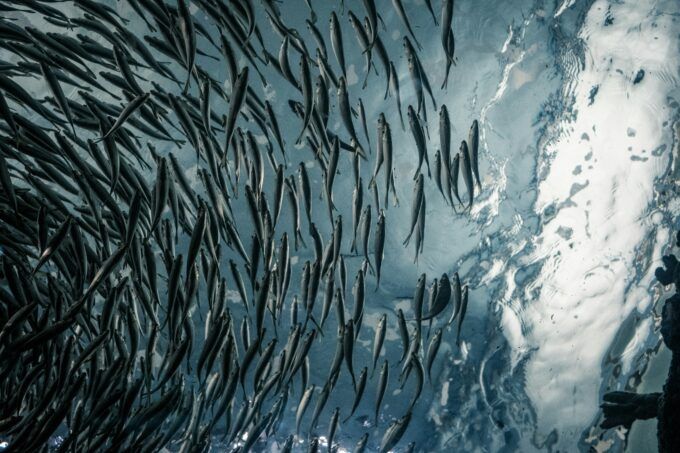
Image by Lance Anderson.
Since its inception over ten years ago, CounterPunch covered the attempt to sell and market the genetic modified (GM) AquAdvantage salmon. Most CounterPunch readers will be happy to know that AquaBounty Technologies, the company that produced the “Frankenfish,” has shut down, largely thanks to grocery chain rejection.
But that doesn’t mean new GM animals have disappeared. In fact, they are thriving largely through flying under the public radar.
Like feeding food/farm animals with hormones, antibiotics and growth promoters to make them gain weight faster, the creation of GM animals is presented as “feeding” more people. The truth is the genetic “improvements” usually only benefit industrial farmers as they create more “profitable” animals that can be grown and processed more quickly.
For example, Giuseppe Ambrosi, European Dairy Association president, told Dairy Global that, “Genome editing has been found to be a valuable tool for lightening the hair and coat color to better adapt dairy cattle to rapidly changing climatic conditions.” Dark coats absorb more “solar radiation”––so here’s a solution to climate change!
National Hog Farmer, another industry outlet, wrote that genetic engineering “has the potential to transform how we improve livestock with genetics … increasing agricultural productivity (more food for more people in our community and elsewhere).”
GMO dairy cattle have been developed to grow without horns by taking DNA from the genome of Red Angus cattle, which suppresses horn growth, and inserting it into the cells of a Holstein bull. Nature may have given the animals horns, but the horns simply present a pesky risk to workers and other animals.
Pigs resistant to porcine reproductive and respiratory syndrome have been genetically engineered and researchers have been trying to genetically engineer cows that are immune to the terminal, prion-caused disease known as “Mad Cow” after the worldwide outbreaks in the early 2000s. Mad Cow was often blamed on the practice of making cows cannibals–feeding dead ones to live ones. Prion-free cows could eat anything!
Tampering With Nature For Human Advantage —
Objections to GM crops are certainly magnified when it comes to GM animals who know they are alive, unlike plants, a mental state called sentience.
Creating new animals for dedicated human use “is a mechanistic use of animals that seems to perpetuate the notion of their being merely tools for human use rather than sentient creatures,” said the Humane Society of the United States now named Humane World for Animals.
Here is a partial list of GMO animals that have been engineered for profit, key word partial.
* Mice
In the 1980s, mice were engineered with human genes for lab experiments, some guaranteed to get cancer. The new life forms were patented.
* Goats
Scientists genetically engineered goats to produce a protein found in spider silk in their milk to make fabric.
* Pigs
In 2020, the FDA approved the “GalSafe” pig designed for humans with “Alpha-gal syndrome,” an allergy to “alpha-gal sugar,” found on pigs’ cells. Surfacing after a tick bite, the allergic reactions can also occur with beef, pork and lamb so maybe more GM animals are in the pipeline.
* More Pigs
In 2006, researchers began engineering cloned pigs to produce more “good” omega-3 fatty acids and less “bad” omega-6 fatty acids.
In 2010, researchers created the Enviropig said to produce less phosphorus in their urine and feces
* Chickens
In 2007, United Kingdom scientists produced genetically modified chickens to lay eggs containing cancer-fighting drugs.
Once you’ve made one transgenic bird, you can make many enthused Dr. Helen Sang, the lead scientist on the Franken project.
* Other Cow Modifications
In 2011, Chinese scientists introduced human genes into dairy cows to produce milk closer to humans’.
A mouse gene was added to a cow to produce allergy-free milk n New Zealand. Yum.
*Poultry
Poultry chimeras––animals with two sets of DNA–– have been created by injecting quail cells into eggs of chicken embryos in hatcheries.
Conclusion
The AquAdvantage Salmon may have failed because of its wide media coverage which included environmental projections, ethical questions about species creation and consumer feedback. The many GM animals that have been created in the lab before and after the salmon benefit from underreporting: there is almost no consumer outrage.
The post The Franken Salmon Is Dead in the Water but Other GM Animals Thrive appeared first on CounterPunch.org.
This post was originally published on CounterPunch.org.